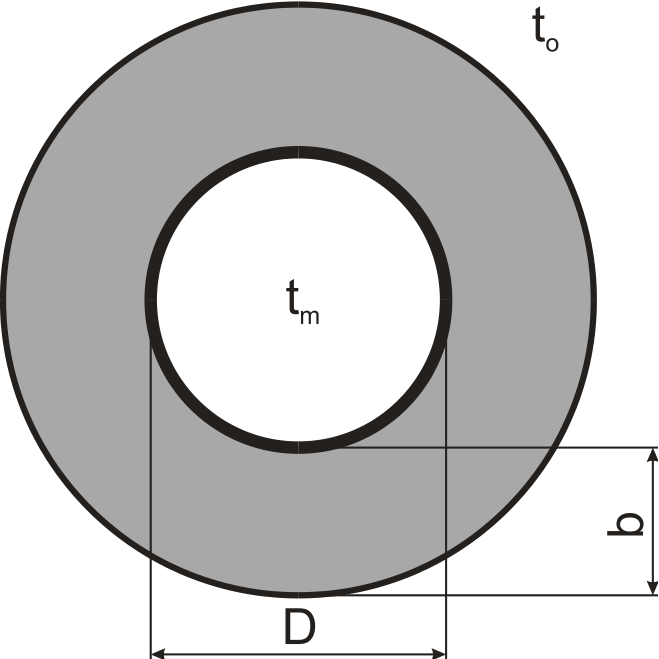We can use the following simple program to calculate the heat losses of an insulated pipeline and the required length of the heating cable:
Calculation of pipeline heat losses
To maintain the temperature of the medium inside the pipeline, we have to supply the same amount of heat, that is leaking.
The required power for the heating to determine the capacity power of the heating cable is clearly shown in the table Heat losses of an insulated pipeline.
For curious readers we state the relation for the calculation of heat losses of an insulated pipeline:


where
Q – heat loss for 1m of the pipe [W/m],
λ – coefficient of thermal conductibility of the insulation [W/m.K],
D – outer diameter of the pipe [m],
b – thickness of the insulation [m],
tm – (desired)temperature of the medium inside [°C],
to – environment temperature [°C].
To determine the required power it is good to multiply the heat loss by the conduction coefficient of the insulation (typically 1,06).
Warning:
We strongly recommend to avoid heating an uninsulated pipeline. If even the thinnestof insulation is used, the necessary power will drop significantly.
Pipelines usually include other elements beside the actual pipe, on which heat losses of the transported medium also occur. We´re mostly talking about fixtures (valves, flops. slide valves), furthermore pumps, supports or hangers. With all these elements it is necessary to count in higher heat losses, which we have to compensate. When calculating these losses it is possible to proceed from the insulated area of the device and count it as a loss of a general area. Empirical tables were created to simplify this suggestion. The following table contains the capacities necessary to heat some typical fixtures (valves, flops). It´s use is similar to the table of capacities for pipelines.
Table for Thermal losses of insulated valves and flops
For the compensation of heat losses of supports and hangers we add a length of the cable of approximately 5 times the diameter of the pipeline.
Warning:
When the autoregulating cable was used, we determined the capacity of the cable at the desired medium temperature. It is necessary to determine the capacity value of the cable from the diagram of the dependence of the capacity of the autoregulation cable on the temperature.
